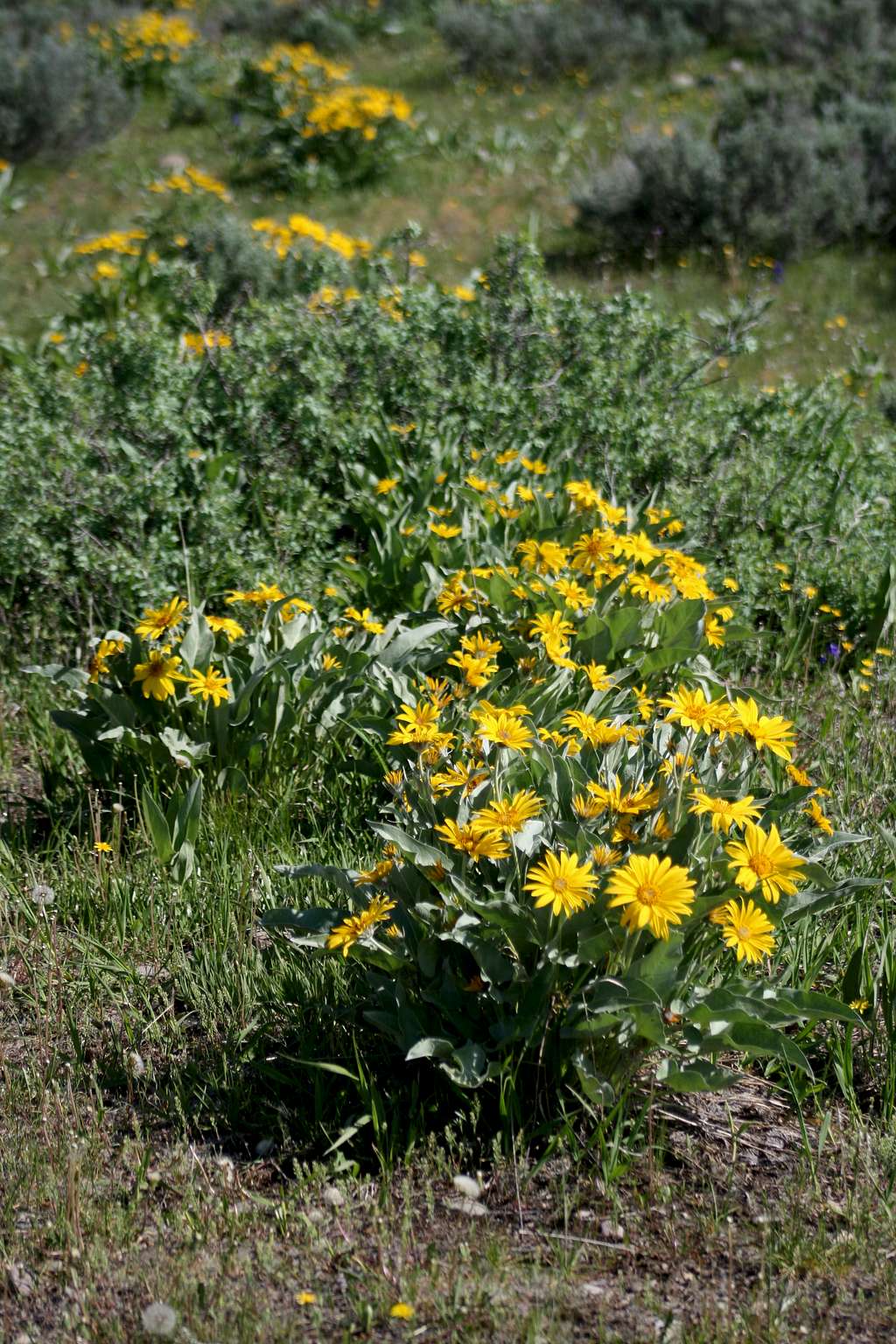Dmitry Pruss - Jul 20, 2008 11:32 am - Voted 10/10
Arrowleaf?I zoomed in on the leaves and I am pretty much sure it's arrowleaf balsamroot. It was all over the meadows in Yellowstone when we were there in late June.
The mule ears leaves are darker, with some parallel veins across, and most importantly, they don't have long leaf-stems; rather, leaves typically "hug the main stem" at their base, hence its Latin species name, amplexifolia, "[stems] wrapped by leaves"
Arthur Digbee - Jul 20, 2008 12:30 pm - Hasn't voted
Re: Arrowleaf?You're probably right. But both species are closely related, common in the area, and bloom at the same time.
Here are some other marks: these leaves don't have that "arrow" shape. Also, arrowleaf leaves are hairy, while mule's ears are glossy--see also this picture.
But I'm not expert, I'm working off guidebooks.
Dmitry Pruss - Jul 20, 2008 1:06 pm - Voted 10/10
Re: Arrowleaf?I voted for that other picture before, and also stared hard at the leaves :) ... but couldn't quite make out thir shape there.
On this picture the leaves do look triangle-shaped with long stems, and a tad velvety. Yes, mule ears would be a lot more glossy and leaves would be quite oblong and stemless. Also mule years would have smaller leaves higher up on the flower stems, not just in rosette of leaves springing off the ground.
You are right, both plants are among the most common Asteraceae in our mountains, but their habitats don't overlap that much.
Arthur Digbee - Jul 20, 2008 4:07 pm - Hasn't voted
Re: Arrowleaf?Well, if their habitats don't overlap much, here's what I can tell you:
This picture - - somewhat sandy, well-drained soil on top of small ridge, full sun. Lots of patches of the flowers, like these here. Picture is from south looking north. In Tetons at about 6800 feet. Photo taken about 25 June.
Other picture - - not sandy soil, but well-drained "dirt" on south- and east-facing slopes. Mostly in patches, as in the other picture, but some "fields" of more continuous flowers nearby. In northern Yellowstone, more like 6000 feet, taken about 20 June.
Anyway, thanks for your help with identification!









Comments
Post a Comment